Why do we need phytolamps for plants and how to choose them correctly
According to experts, a phytolamp for plants is considered the best option for additional lighting. At home, the lighting device is used to illuminate the most capricious representatives of the flora, for which there is not enough natural light.
Before purchasing a phytolamp, it is advisable to study its advantages, disadvantages, and find out its service life, because such a purchase will not be cheap. Some craftsmen use their existing skills and start making lighting with their own hands.
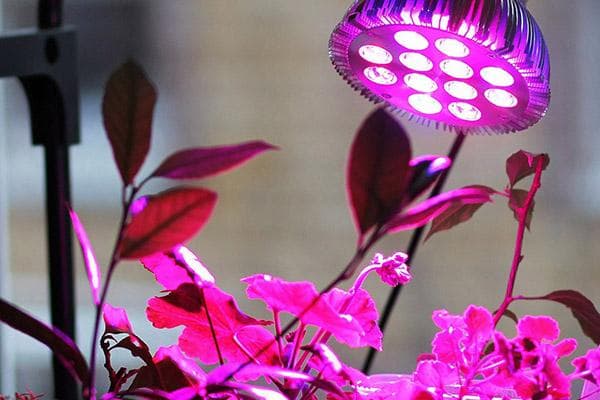
Why do plants need lighting?
In autumn and winter, indoor plants experience an acute lack of light, which impairs their decorative qualities and inhibits growth.
Light-loving plants include:
- most orchids;
- succulents;
- coleus;
- alocasia;
- begonias;
- pelargonium.
The list goes on, it includes a considerable number of colors. For their full development, a daylight period of 12–14 hours is required. In winter, plants receive only 7–8 hours of natural light per day. The light intensity at this time of year is also low due to cloudy weather. These factors make the use of backlighting necessary.
Additional lighting will also be needed when growing seedlings in winter. Otherwise, the seedlings stretch out and their immunity weakens.
Benefits of phytolamps
A phytolamp is an LED lighting device that provides lighting with a fuller spectrum compared to other lamps. It is this lighting option that satisfies all the needs of the plant, as a result, the photosynthesis process proceeds more smoothly.
For normal development, plants need different rays. The optimal spectrum is in the range of 440–660 nm.
A high-quality phytolamp produces radiation that is close in its characteristics to the natural flow of light. The advantages of such lighting:
- Long service life - up to 50,000 hours.
- Economical - consumes little electricity.
- Wide spectrum of radiation.
- Availability of a standard base, allowing the phytolamp to be used in any existing lamp.
- Environmentally friendly - no harmful substances are used in the production of lighting.
- Possibility of adjusting lighting intensity.
- Safety for plants - the lamp can be placed in close proximity to the flower without fear of burning the leaves.
- Fire safety - due to low heating, LED lamps cannot cause a fire.
The emission of an LED lamp contains 60–80% red and 20–40% blue. Visually, this lighting looks pink-violet. Phytolamps of this type were given the name “bicolor”.
Are phytolamps harmful to vision?
To find out how harmful the effect of an LED phytolamp on human vision can be, you need to know its characteristics. Compared to mercury, sodium or fluorescent lamps, LED lamps have minimal negative effects on the eyes.
Features of LED bicolors:
- The pulsation coefficient of this backlight is extremely low (less than 1%).
- LEDs have weak UV radiation, which again minimizes harm to humans.
- Sometimes some tension and a feeling of discomfort in the eyes may still occur if you continuously look at the emitted waves of the blue spectrum for a long time, but this does not lead to serious consequences or illness.
For those who are concerned about this issue, curtains or a decorative screen can be used as a barrier if the LED lamp illuminates the plant in the back of the room.
An important note here is that all of the above applies to high-quality phytolamps. No guarantees can be given regarding cheap Chinese products. In particular, studies have revealed that the pulsation coefficient of such bicolors is much higher, so the lamps can be harmful. By the way, pulsating light rays can not only impair vision, but also negatively affect the functioning of the central nervous system, especially in children.
How to choose a good phytolamp?
Beginners are sometimes put off by the price of LED lighting, and they look for the most profitable option. In particular, phytolamps for flowers are often ordered from Aliexpress, where such products actually cost less than in garden centers and specialized stores.
Will such a purchase be justified? Alas, the buyer cannot control exactly how such lamps are made in production. When disassembling Chinese LED bicolors, experts discovered that the goods often supplied from China are not of the highest quality. At best, a cheap lamp will be useless for plants, at worst, it will be harmful to health.
3 facts to pay attention to:
- LEDs vary in power.It is better to choose a backlight with several powerful LEDs than with a dozen low-power and low-quality ones.
- Good lamps use diodes with a power of 1 to 5 kW and high efficiency.
- The quality of the lamp largely depends on the driver and cooling system. Weak radiators lead to accelerated failure of LEDs - they simply burn out.
To be fair, it should be noted that Chinese manufacturers also have specimens of phytolamps of standard quality, but buying a lamp from China is always a lottery game.
The best LED phytolamps
Bicolor manufacturers from America and Europe are leading the world market today, but their products cost incredible amounts of money. Although the quality in this case is guaranteed, not everyone can afford such a purchase.
Among domestic manufacturers, one can highlight the Moscow company MiniFarmer. It produces not only phytolamps, but also entire lighting systems that can be easily installed on a windowsill. Here you can purchase the best models with the optimal combination of price and quality. On the company's website you can view the product catalog, select the desired model and order delivery.
How to make a phytolamp with your own hands?
Those who want to save money on purchasing a phytolamp can make it themselves. For a successful result, you must have some special knowledge and skills.
First you need to make calculations to determine the required lighting power. The following parameters can be taken as a basis:
- for flowers on the windowsill you will need a lamp with a power of 40 W/m2;
- the lamp used in the back of the room must have a power of 80 W/m2;
- When growing plants in completely closed boxes (grow boxes), lighting with a power of 150 W/m is required2.
Install the lamp at a distance of 25–40 cm from the plants. It is advisable that it be height adjustable. If the entire window sill is occupied by seedlings or flowers, the light sources need to be distributed evenly.
To create the backlight you will need:
- LEDs;
- radiator;
- driver or power supplies with drimmers;
- connecting copper wires.
When choosing a driver, you need to take into account the need to adjust the colors of each spectrum. If you cannot purchase a special device, you can use regulated power supplies for red and blue separately. The output voltage should be enough to power the LEDs. Power is selected with a reserve (20%).
Since red color in bicolor predominates over blue in a ratio of 2:1, the parameters of power supplies are selected accordingly. The driver power depends on the total power of the LEDs.
As a housing, you can take an old fluorescent lamp or a plastic box of a suitable size.
Assembly technology:
- Before assembly, the LEDs should be checked for functionality. This can be done with a special tester.
- The LED strip is tested by connecting to a current source.
- Powerful LEDs must be installed on the radiator. An aluminum plate or piece of profile can be used in this capacity.
- If the radiator has no holes, the fasteners are made using heat-conducting glue. The LEDs are attached to the plate with holes with self-tapping screws or bolts using thermal paste.
- The LED strip is glued to double-sided tape or an adhesive layer.
- The LEDs are connected in series, and resistors are installed in parallel with them.
The soldering iron power should not exceed 25 W to avoid overheating of the diodes. Acid cannot be used for soldering; solder and rosin are used instead.
LED phytolamps are the most suitable light source for seedlings and indoor plants. Due to a more complete spectrum of bicolors, flowers are provided with the opportunity for full development and high-quality flowering. When choosing a lamp, be sure to take its characteristics into account.
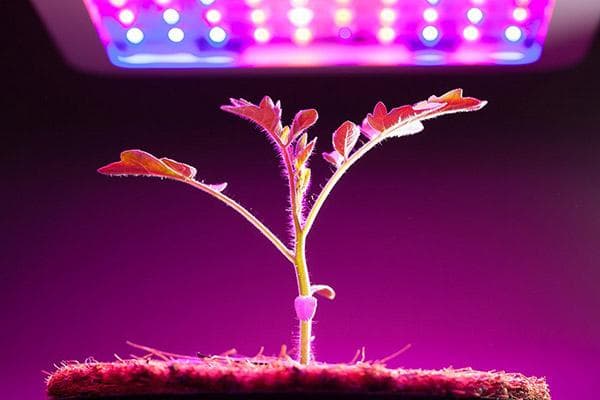
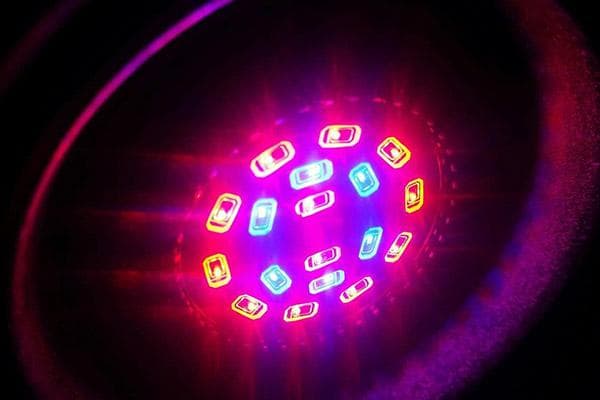
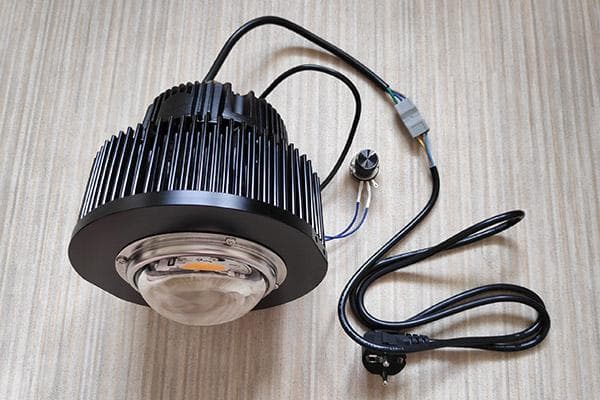
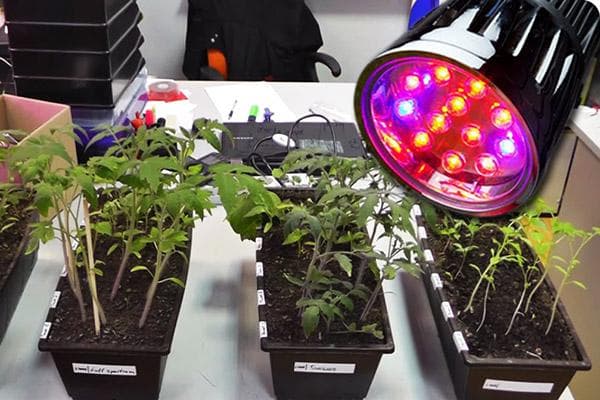
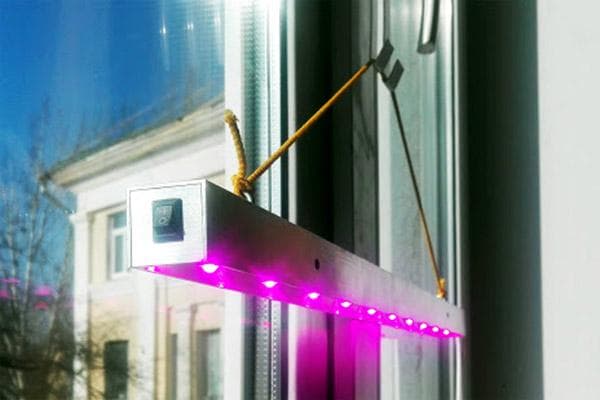
Great article. I read it and made my wife a phytolamp for flowers. Nothing complicated.